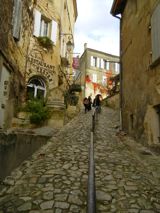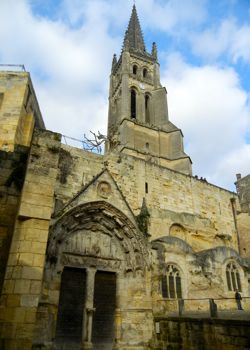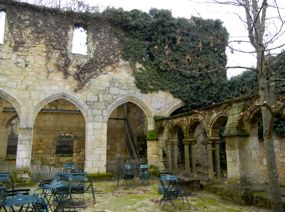 |
What to See in Saint-Émilion, France | |
| Most people visit Saint-Émilion for its wines, but there's lots more to see and do. | ||
|
|
|
Saint-Émilion is a charming hilltop town less than an hour from Bordeaux by train or car. The center of a famous wine region, Saint-Émilion's vineyards start in the town and surround it for kilometers. It's a great place for a day trip from Bordeaux, or for an overnight to enjoy its beautiful scenery, restaurants, and vineyards. Since the 9th century, blocks of stone were excavated for châteaux and other buildings in the area, leaving many underground caves perfect for wine storage. The town boasts churches, cloisters, and museums, all accessed via steep cobblestone streets. Be sure to wear good walking shoes! A UNESCO World Heritage Site, Saint-Émilion was the first vineyard landscape to be recognized for this designation. The Office du Tourisme offers maps and a number of guided tours. A guided tour is the only way to visit Saint-Émilion's underground monuments: the Monolithic Church, carved from limestone rock in the 11th century; The Hermitage of Saint-Émilion, the cave home of the 8th century monk who gave the town its name; the Trinity Chapel, with its 14th century frescoes; and the Catacombs, or ancient underground graves. Tours are in French year round, with written explanations in other languages. Tickets are available at the Office du Tourisme and tours start at the Place du Marché, near the bell tower that stands over the Monolithic Church. Those who want to experience the vineyards of Saint-Émilion up close should ask for a map of a self-guided walking tour of the vineyards. This 6 kilometer route, called the Boucle des Petites Histoires, passes through several châteaux. Just around the corner from the Office du Tourisme is the Maison du Vin, which offers a wide range of local wines for purchase, as well as other wine-related items and information. The Office du Tourisme and the Maison du Vin can also provide information about châteaux and cellars that are open to the public. There are many châteaux and deciding which to visit can be hard. One approach would be to identify wines at the Maison du Vin that are in your price range, and visit those châteaux. The bell tower offers lovely views of the town, as does the 13th century keep, visible as you approach Saint-Émilion. Referred to as the Tour du Roi, this was part of the medieval city's fortifications. A climb of some 120 steps will get you to the top. Across the Place du Marché are the Collegiate Church and Cloister, dating from the 14th and 15th centuries. East of the Place du Marché you will find the Couvent des Cordeliers, where tables and chairs in the ruined cloister allow you to taste its wines while enjoying the historic building. Further down the same road you'll come to the Porte Brunet, one of the old city gates. Walking down the steep and narrow streets of Saint-Émilion you'll see a number of shops offering macaroons, a specialty of Saint-Émilion since the Urseline sisters developed the recipe in 1620. These light almond and egg white cookies are delicious, so be sure to try some.
|
|
Above, Bell Tower and Monolithic Church, Saint-Émilion, France.
|



